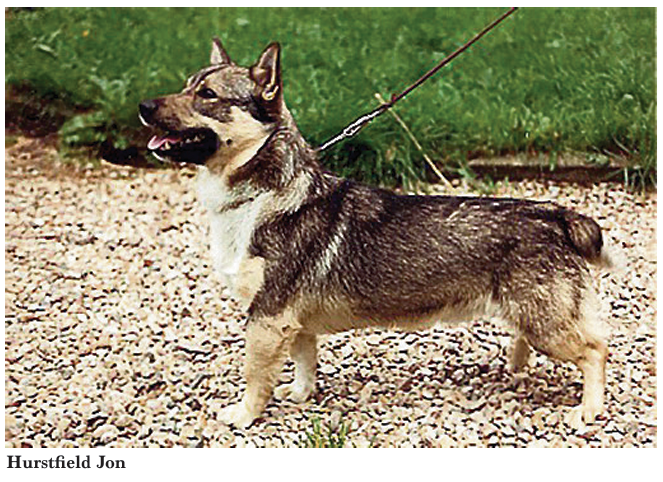A Swedish Vallhund History
by Chris Millard
In the 1940s the breed was almost extinct in its native land. Count Bjorn von Rosen, who was a respected judge of dogs, remembered seeing these active, stub-tailed, small grey dogs working on farms locally from his youth and was determined to save the breed. He placed a newspaper advertisement for interested parties to contact him. One of the replies he received was from K G Zettersten, a schoolmaster and breeder of Scottish Terriers, who lived in Vara. He agreed to look for typical examples of the breed and started his search by asking his pupils if they knew of any suitable dogs. The first few attempts proved fruitless, as the dogs certainly weren’t Swedish Vallhunds. However he was told of a bitch living locally with Mrs and Mrs Anderson. This turned out to be Topsy who was very typical of the breed, but since she was 12 years old was unsuitable for breeding. However, the two men used her as the model for the breed.
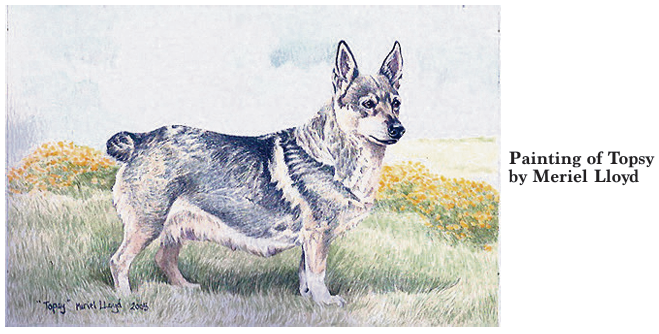
The search continued in the Vara area and very soon they found another typical bitch, Tessan, living with Johanna Johnson. They both admired this bitch very much. They also found her mother, Vivi, eight years of age in December 1940, living on a local farm with Axel Skaar. It has been suggested but never confirmed that she was the daughter of Topsy. The two men continued searching as they were desperate to find a suitable male. In the village of Duskebo, living with Bertil Dahlen, they discovered Mopsen. This dog was to have a profound effect on the breed, siring a number of important Vallhunds including Borghallas Cajus, Borghallas Caser and Borghallas Corrina, and Pelle. Unfortunately, Mopsen was cryptorchid and 16 inches at the withers, but in all other respects an excellent example of the breed. Another bitch was soon found with Erik Skoog in Rannagarten, Vedum, this was Gulli. Again typical in all respects, although she was reddish brown in colour so was never used for breeding. They also found Bella in March 1943 living with Artur Rygell in Salstad. She was soon joined by another two dogs, Nicke and Tusse. So with this nucleus the breed was resurrected. The two men continued searching for typical stock and eventually found Tyra living in Eling, mated to a dog called Pelle (a son of Tessan); Borghaalas Ajo was produced. It’s fair to say he proved to be a major influence on the breed although he was described as having lift eyes and fleshy cheeks, he occupied a very special place in K G Zettersten’s heart, as he often referred to him as “that rascal Ajo”. The breed standard was developed in 1943, using Topsy as the model, and it was modified to include the red brown colour of Gulli. It was never changed until 1964.
Varied type
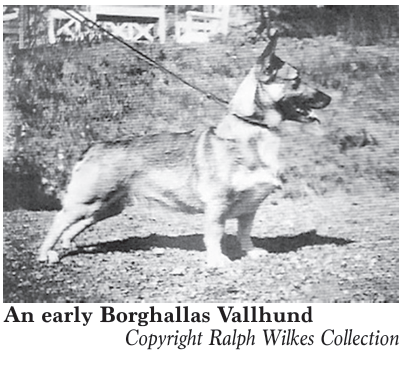
An early Borghallas Vallhund Copyright Ralph Wilkes Collection In these early days type varied greatly and many Vallhunds were very high on the leg. Many were produced with a great deal of white and often soft ears. As a result the standard called for height to be between 12.5 -13.5 inches and white not to exceed 30% of the total colour. Also in the early days only tailless dogs were used for breeding. This was later amended to include tailed specimens so thatthe gene pool could be widened. Many of our dogs today can trace their ancestry back to these early dogs and it is also important to recognise that the stub tailed gene is very much alive in the breed today. In the UK we have to thank the late Joe Cartledge and his Swedish wife Liz for the introduction of the breed into the country. Joe had seen the Vallhunds on many of his judging trips to Sweden and was very taken with them, admiring their unexaggerated appearance and active, intelligent nature. Snackans Kikkan was acquired from Mrs Stahlberg a breeder of pugs whom Mrs Cartledge had known from childhood.
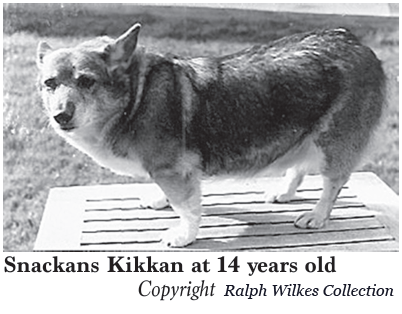
She came over in whelp to a dog called Kurre in 1974. She is described as a strong shapely bitch with a steady and calm temperament. She produced the f irst Ryslip litter of Vallhunds which contained Rolf, Roland, Ragnar, Ragnild, Rebecca and Rustibuss. The latter went to Sheila and Dennis Haddon, Elkhound breeders, becoming Ryslip Rustibuss of Norsled. He was a very well boned, substantial male with a good head, excellent top line and has a full white collar.
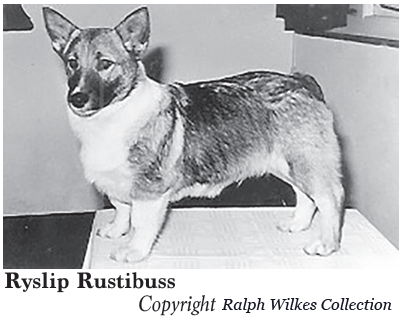
Mrs Cartledge was still looking for a good dog and Mrs Stahlberg and her partner Mrs Inga Britt Johnsson found a dog working on a cattle farm. This was Valle of Ryslip, he was joined by a four month puppy bitch called Snackans Isa. Isa didn’t enjoy quarantine and was described as having an excitable nature. She had one litter mated to Valle and was then placed in a sympathetic home on a farm. The most notable dog in her first litter being Ryslip Fritjof owned by Miss Nicholls who was the first Vallhund to win Best in Show at an exemption show in Bracknell.
Outstanding sire
Valle of Ryslip was a very typical male with a beautiful head and was well marked with a lovely outgoing, friendly nature. He proved to be an outstanding sire as did Rustibuss. Although perhaps he could have benefitted from a little more height on his legs. However, he had a Valle of Ryslip wonderful temperament and friendly nature. He was eventually given to Mr Tim West and became a mainstay of the Starvon Kennels and more importantly Tim’s constant companion.
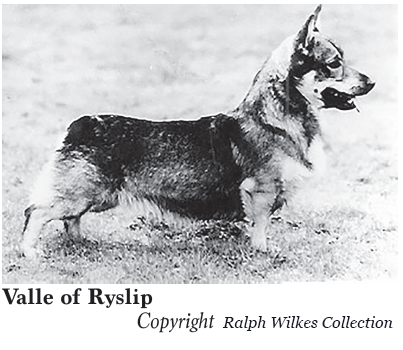
Mrs Cartledge was asked by the Haddons to look for a suitable bitch to put to Rustibuss. On a judging trip she found Akkevall Zamba living with the Perssons in Sweden and although imported later in whelp she missed. That didn’t really matter as she turned out to be a beautiful femmine bitch very typical in every respect and a very successful showgirl becoming the foundation of the Norsled Vallhunds.
It’s interesting to note that in later years Hurstfield Jon was imported to the Perssons Akkevall kennel by the late Jaqui Bayliss. I believe it was Jacqui’s way of thanking them for sending such an important foundation bitch for the breed in the UK.
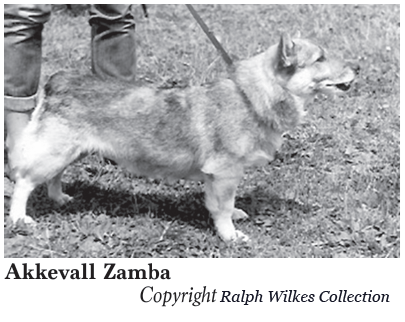
We are very lucky that most Vallhunds in the UK can still trace their pedigrees back to these few, but very influential dogs and bitches. We also owe a great debt of gratitude to Mr and Mrs Cartledge for bringing this delightful breed to the UK.
